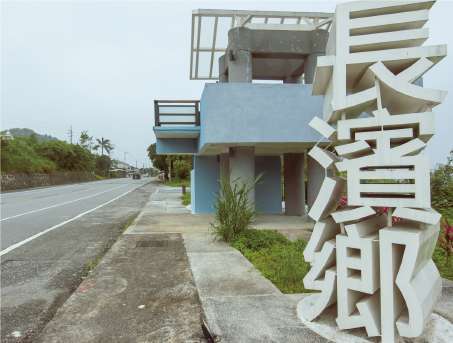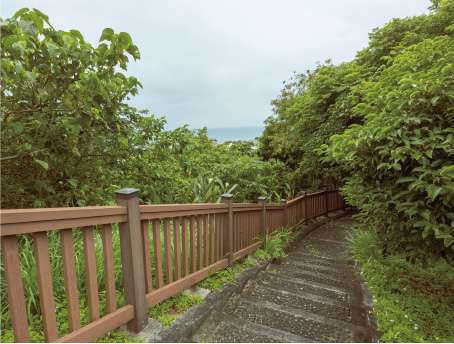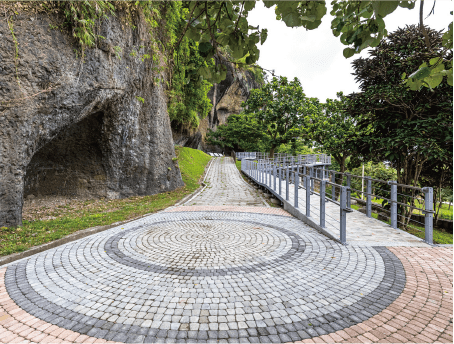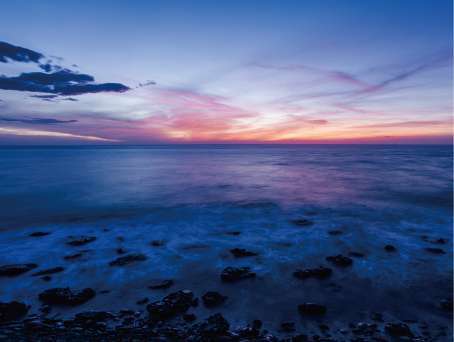
|
|
Austronesian Art and Identity
|
|
5000 years ago, an ancient culture—a culture all but almost lost to time—covered a tremendous portion of
the Earth with Taiwan to the north; Easter Island to the east; Madagascar to the west, and New Zealand
to the south; intrigues the world’s historians and researchers to track down and determine this cultures
past. Descendants of this vast and expansive culture are known today as Austronesians. Many believe
Taiwan is where this great civilization started.
Taitung, located on the south end of Taiwan’s east coast, boasts much natural beauty in addition to well-rooted Austronesian traditions and customs. So, it should be no surprise that Austronesian culture happens to be an integral element in Taitung’s cultural identity. The County Government sponsors the biannually held Austronesian International Art Award (AIAA) to entice artists, local and international, to participate in this event, and by doing so, expands the energy of their artistic creations by infusing Taitung’s cultural elements and identity as the focal point of their submissions. This year’s AIAA will be accepting submissions from June 1 until July 1. Submissions that are accepted, will go on exhibit at end of the year from December 17, 2022, until January 29, 2023 at Taitung Living Art Center.
The 2022 AIAA is going to be bigger and better than previous art exhibitions. This year’s event not only increases the number of finalists from 2 to 3 but also the prize money as well: $400,000 NTD per finalist; that’s $100,000 more than the last art exhibit! What's more, domestic and foreign applicants are both eligible to participate and submit works in this year’s event, as in 2020 AIAA submissions that were restricted to Taiwanese citizens only in light of the worldwide pandemic. A recent National Geographic three-part documentary series, Secrets of the Ocean Tribes, released in mid-February and concluded in early March brought an international audience and spotlight to Taitung—as well as many other aboriginal communities across the island—to experience and explore their findings on whether Taiwan is definitely the origin location of the Austronesians. While there is no universally accepted theory of the exact whereabouts of their common point of origin, the most plausible—and the most accepted—theory is the Austronesian originated on Formosa with DNA and linguistic evidence to substantiate the claim.  The documentary dives deep into current DNA and linguistic evidence as well as tries to draw parallels between the cultures of Indo-Pacific communities from nations like Taiwan, New Zealand, and Indonesia among others. They found recurring themes of the tattoos playing an important role in society, similar tattoo designs, and similar interpretations of the afterlife between the different communities, however, evidence was not compelling enough outright disprove other Austronesian origin theories. While their findings were inconclusive and unable to label Taiwan as the definitive Austronesian Hawaiki—the Austronesian word for motherland—the inconclusive nature of their research may be just as satisfying as disproving other origin theories. As Julian Davison, historian, and host of the Secrets of the Ocean Tribes documentary, puts it: “Maybe that (Austronesian Hawaiki is) not what matters—the legend of a common homeland is something that can remind us every day, how we all live on a shared planet of which we are not the master but just a part of.” Just as the Austronesian International Art Reward has done and will continue to—bringing Taitung’s rich cultures and communities closer together. Please consider attending and or submitting to the AIAA exhibition. Immerse yourself in the rich traditions and cultures of Indo-Pacific communities that make living in Taitung so special. Enjoy our past, in the present, and make our future even brighter and better!
█
|
|
Changbin — Tranquil, Beautiful
Hidden Gem of Taitung |
 Last month, my wife and I were on our two-day excursion to Taitung’s East Coast and East Rift Valley. We stayed in Changbin for an afternoon with a just-go-there attitude and let my curiosity take me around the back allies of Changbin, and what I saw was nothing greater than the serenity of a town close to the ocean like Changbin can.  Upon arriving my wife and I were feeling peckish. The Ms. spotted a sashimi stand on the side of the road. Sashimi in one hand, and the steering wheel in the other, I took to the backroads for a place to park, chow down, and explore. It was here I came to the epiphany that Changbin is a place of tranquility and beauty. One quick side note, Changbin—hands down—has the best sashimi to be had at the best price to be had. Changbin’s population of roughly 6,800, is dwarfed by Taitung City’s 100,000. The overall sound profile of Changbin is quiet and calm. Deviate one corner from Changbin’s main road, you’ll maybe see one other person, a dog maybe, turn two, you’re one with nature. Deviate 4 corners, as I did, and you’ll be at Changbin Sports Park.  The park was enormous—gigantic even! A little way inside the park there was an observation deck. Turn to one side, you are greeted by an expanse of emerald grass; the other side you catch the slightest glimpse of the sea through a dense shrubbery of trees—absolutely an impeccable sight to behold. What’s more, with no care in the world and people around, meant my best friend in the whole wide world, Cherry, could run around without obstructions within the serene nature that surrounded us. 
Back to the main road and 4 more deviations, I encountered murals on the walls and storage units of Changbin’s back allies. It completely shattered my expectations. I was also a bit puzzled—seemed like was little rhyme or reason why they were placed here. My conclusion is they are nice accent pieces—hidden gems—if you will, to the overall Changbin atmosphere, bringing additional colors to the concrete architecture of Changbin city. Entering Changbin County you’re greeted with amazing vistas and oceanscapes. Take a left-hand turn off Highway 11 to enter downtown Changbin. And then take as many, or as few turns as you like, to experience Changbin’s unique one of a kind of off-the-beaten-path experience—you just be as surprised as I was.
█ █
|
|
Taiwan’s East Coast is Narrow; yet, Vast
|
|
The narrow strip of land between Taiwan’s Central Mountain Range and the Pacific Ocean is known as the
East Coast National Scenic Area. It’s been home to civilizations as early as 50,000 years ago. Roughly
50 prehistoric sites have remained intact until today, leaving a great foundation for archaeologists and
anthropologists to come to Taiwan’s East Coast to research and identify the origins and cultures of the
Austronesians.
 The earliest civilization that can be identified with observable archaeological sites on Formosa is that of the Changbin Civilization. There are only two sites of this ancient Changbin civilization remaining: the Baixiangdong site, or Cave of the Eight Immortals, and the Xiaoma site, or Cave of the Small Horse. The former is used as evidence to suggest this civilization used the sea caves that make up the Cave of the Eight Immortals as their shelter and houses. In 1988, an archaeological team from National Taiwan University uncovered an underground tomb—this is the oldest tomb ever discovered in all of Taiwan. The Changbin Civilization were hunter-gatherers just as the paleolithic cultures before then had been; consequently, there is no agriculture or ceramics left by this ancient civilization. The stories of the coastal people span multiple cultures, eras, and languages, all to benefit from this narrow strip’s excellent land for settlements and paddy fields. You had the indigenous communities like the Amis, Sakiazya, Siraya, and Bunan making their way to the coastal terraces for their own reasons. For example, the Amis came for water and land, while the Sirayas were displaced by Taiwanese and Hakka in the southwest.  Over the course of 200 years, many communities—indigenous, Hakka, Taiwanese, and Japanese—all flocked to the East Coast for one reason or another, setting the stage for the East Coast National Scenic Area to be full of memorable stories—stories not just only prehistoric Austronesian cultures of old, but also the ethnic-communities of present-day. Therefore, is it exceptionally befitting that Taitung should be bestowed the name of The Gateway into the Cultures of Taiwan.
█ █ █
|
Upcoming Events
|
||||||||
| ©Taitung County Government 2022 |









